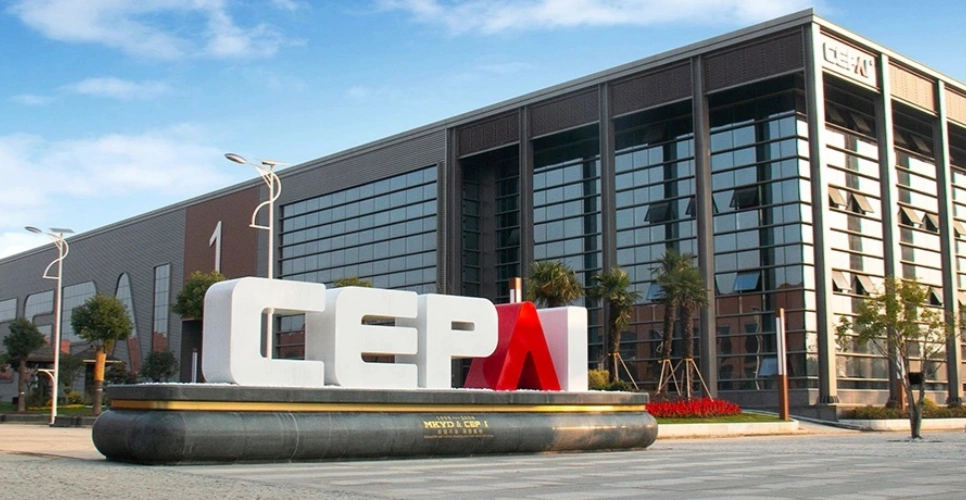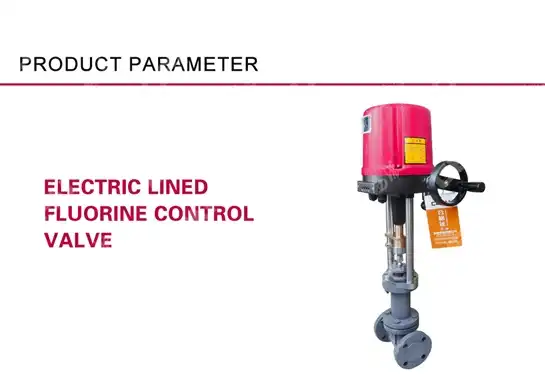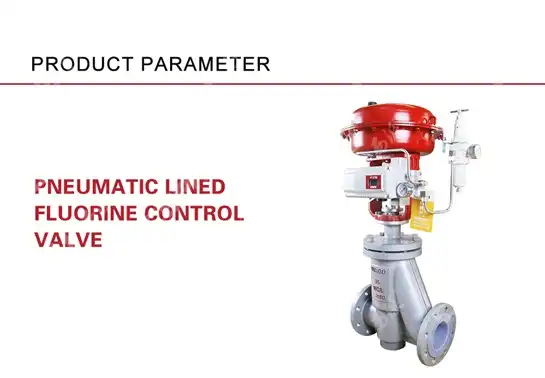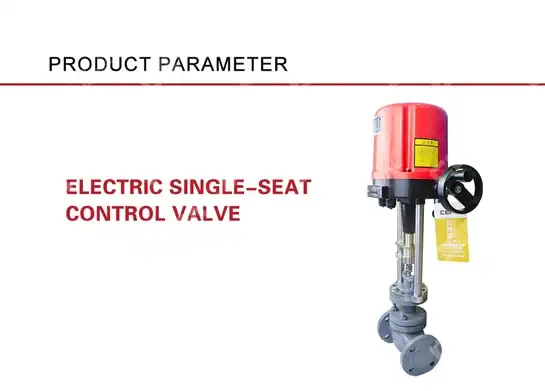Understanding Valve Flow Characteristics for Your High-Temperature Application
Imagine your critical high-temperature process suddenly experiencing flow irregularities, causing production delays and safety concerns. Understanding valve flow characteristics becomes crucial when dealing with extreme thermal conditions where conventional valves fail. High-Temperature Control Valves require specialized knowledge of flow dynamics, thermal expansion effects, and material behavior to ensure optimal performance and system reliability in demanding industrial applications.
Flow Characteristics Fundamentals in High-Temperature Control Valve Systems
High-temperature applications present unique challenges that significantly impact valve flow characteristics and overall system performance. When fluids operate at elevated temperatures, their viscosity, density, and thermal properties undergo substantial changes that directly affect flow behavior through High-Temperature Control Valve assemblies. These thermal effects create complex flow patterns that require careful consideration during valve selection and system design phases. The relationship between temperature and flow characteristics becomes particularly critical when dealing with media temperatures exceeding 400°C. At these extreme conditions, traditional flow coefficient calculations may become inadequate, requiring specialized computational methods to accurately predict valve performance. High-Temperature Control Valve manufacturers like CEPAI have developed advanced testing protocols that account for these thermal variations, ensuring reliable operation across the entire temperature spectrum.
-
Thermal Effects on Flow Patterns
Temperature variations significantly influence flow velocity profiles, pressure drop calculations, and cavitation potential within High-Temperature Control Valve bodies. As operating temperatures increase, fluid expansion occurs, altering the effective flow area and changing the valve's inherent flow characteristics. This phenomenon is particularly pronounced in applications involving steam, hot gases, or heated liquids where thermal stratification can create non-uniform flow distributions. Understanding these thermal effects enables engineers to select appropriate High-Temperature Control Valve configurations that maintain consistent performance despite temperature fluctuations. CEPAI's extensive testing facilities simulate these extreme conditions, providing valuable data for accurate flow characteristic determination and ensuring optimal valve sizing for specific applications.

Material Selection Impact on High-Temperature Control Valve Performance
The choice of materials for High-Temperature Control Valve construction directly influences flow characteristics and long-term reliability. At elevated temperatures, material properties such as thermal conductivity, expansion coefficients, and surface roughness change significantly, affecting flow patterns and pressure losses. CEPAI utilizes premium materials including 304, 316, and 316L stainless steel with specialized surfacing treatments to maintain optimal flow characteristics throughout the valve's operational life. Material thermal expansion must be carefully considered when designing High-Temperature Control Valve systems, as dimensional changes can alter flow areas and affect valve performance. The selection of appropriate body materials like WCB, CF8, and CF8M ensures dimensional stability while maintaining excellent flow characteristics under extreme thermal conditions. Advanced materials also provide superior resistance to thermal shock, preventing sudden flow characteristic changes during rapid temperature transitions.
-
Advanced Metallurgy for Extreme Conditions
High-Temperature Control Valve applications often require specialized metallurgical solutions to maintain consistent flow characteristics. CEPAI's engineering team selects materials based on comprehensive thermal analysis, ensuring optimal performance across the entire operating temperature range. The company's extended bonnet designs accommodate thermal expansion while preserving valve geometry critical for maintaining desired flow characteristics. The integration of flexible graphite and PTFE packing materials ensures reliable sealing performance without compromising flow characteristics. These advanced packing solutions maintain their sealing properties at extreme temperatures, preventing internal leakage that could alter the valve's flow behavior and affect overall system performance.
Control Signal Integration and Flow Optimization
Modern High-Temperature Control Valve systems require sophisticated control integration to maintain optimal flow characteristics under varying thermal conditions. CEPAI's electric actuators utilize 4-20mA control signals with voltage options of 220V or 380V, providing precise positioning accuracy essential for maintaining desired flow characteristics. The pressure-balanced spool design minimizes the effects of upstream pressure variations on flow characteristics, ensuring consistent performance across different operating conditions. The selection of appropriate flow characteristics - whether equal percentage or linear - depends on the specific application requirements and thermal operating conditions. High-Temperature Control Valve systems benefit from equal percentage characteristics in most applications, as they provide better control sensitivity at lower flow rates and maintain stability during temperature transients that could affect system dynamics.
-
Remote Monitoring and Flow Optimization
Advanced High-Temperature Control Valve systems incorporate remote monitoring capabilities that continuously assess flow characteristics and performance parameters. CEPAI's intelligent monitoring systems utilize real-time data analysis to optimize valve positioning, ensuring maintenance of desired flow characteristics despite changing thermal conditions. This technology enables predictive maintenance strategies that prevent flow characteristic degradation before it impacts system performance. The integration of position feedback and flow measurement systems allows for dynamic adjustment of High-Temperature Control Valve parameters, compensating for thermal effects and maintaining optimal flow characteristics throughout the operating cycle. These advanced control systems represent the future of high-temperature flow control technology.
Application-Specific Flow Characteristic Requirements
Different industries require specific flow characteristics from their High-Temperature Control Valve systems based on process requirements and operating conditions. Petrochemical applications often demand precise flow control with minimal hysteresis, while power generation facilities require rapid response characteristics to accommodate load changes. CEPAI's comprehensive product portfolio addresses these diverse requirements through customized valve designs optimized for specific flow characteristics. The oil and gas industry presents unique challenges where High-Temperature Control Valve systems must maintain consistent flow characteristics while handling corrosive media at extreme temperatures. CEPAI's API-certified valves meet stringent industry standards, ensuring reliable flow characteristics in critical applications where system failure could result in significant operational and safety consequences.

-
Customization for Optimal Performance
High-Temperature Control Valve applications often require customized solutions to achieve optimal flow characteristics for specific operating conditions. CEPAI's engineering capabilities enable the development of tailored valve designs that meet unique flow characteristic requirements while maintaining reliability and safety standards. The company's comprehensive testing facilities validate these custom designs, ensuring consistent performance across the full range of operating conditions. The integration of specialized trim configurations allows for fine-tuning of flow characteristics to match specific process requirements. CEPAI's extensive experience in high-temperature applications enables the selection of optimal trim geometries that provide desired flow characteristics while minimizing maintenance requirements and extending operational life.
Testing and Validation of Flow Characteristics
Rigorous testing protocols ensure that High-Temperature Control Valve systems maintain specified flow characteristics throughout their operational life. CEPAI's CNAS-certified testing laboratory utilizes advanced equipment to validate flow characteristics under simulated operating conditions, including extreme temperatures and pressure variations. These comprehensive tests confirm that valve performance matches theoretical calculations and meets application requirements. Flow characteristic testing involves detailed analysis of pressure drop relationships, flow coefficient verification, and cavitation assessment under various thermal conditions. High-Temperature Control Valve systems undergo extensive endurance testing to ensure flow characteristics remain stable over time, even when subjected to repeated thermal cycling and mechanical stress. CEPAI's commitment to quality ensures that every valve meets or exceeds specified flow characteristic requirements.
Conclusion
Understanding valve flow characteristics in high-temperature applications requires comprehensive knowledge of thermal effects, material behavior, and system integration. Proper selection and application of High-Temperature Control Valves ensure optimal performance, safety, and reliability in demanding industrial environments where conventional solutions fail.
Cooperate with CEPAI Group Co., LTD.
CEPAI Group Co., LTD. stands as a leading China High-Temperature Control Valve manufacturer with over 15 years of specialized experience in extreme temperature applications. Our intelligent manufacturing facility, featuring the longest high-precision production line in the Asia-Pacific region, produces High Quality High-Temperature Control Valve solutions that meet the most demanding industrial requirements. As a trusted China High-Temperature Control Valve supplier, we offer competitive High-Temperature Control Valve price options and comprehensive High-Temperature Control Valve for sale packages.
Our expertise extends beyond manufacturing to include complete system integration and ongoing support. Whether you need a reliable China High-Temperature Control Valve factory partner or High-Temperature Control Valve wholesale solutions, CEPAI delivers exceptional value through our ISO-certified quality systems and comprehensive testing capabilities. Contact us today at cepai@cepai.com to discuss your specific requirements and discover how our advanced High-Temperature Control Valve solutions can optimize your high-temperature processes.
References
1. "Control Valve Handbook" - Fisher Controls International, authored by the Emerson Process Management Engineering Team
2. "Valve Selection and Service Guide" - Crane Technical Paper No. 410, authored by the Crane Engineering Department
3. "High Temperature Valve Design and Materials" - ASME Pressure Vessels and Piping Conference Proceedings, authored by Dr. James Richardson and Dr. Maria Santos
4. "Flow Characteristics of Industrial Control Valves" - ISA Transactions Journal, authored by Professor David Chen and Dr. Robert Williams
_1745994800896.webp)
Get professional pre-sales technical consultation and valve selection services, customized solution services.

About CEPAI


